分享筛选游戏理念并制定项目决策的方法
作者:Pascal Luban
相信我们当中大多数人都不会对这种情况感到陌生:工作室的新游戏即将完工,需要开始考虑如何选择下一个项目。公司管理层会召集包括程序员、美术人员、设计师、项目经理以及工作室管理人员在内的一小部分群体参与头脑风暴讨论会议,让大家各抒己见,以便勾勒出下一个项目的主要特征。人人都急于分享自己的想法,结果整个讨论会就陷入了无序状态。这种情况时有发生,因为大家都有自己的一套看法。游戏设计师会优先考虑富有创意的游戏机制,程序员则看重一些技术上的突破性,而项目管理人考虑的则是能够打动发行商或者符合工作室预算的游戏理念。
结果,大家都催生了各自的项目构思。面对众多想法,管理层马上会发现自己难以调和诸多互有矛盾的建议,并将其转变成一个具有可行性的想法。有一个替代方法就是限制参与头脑风暴会议的人数,让公司管理层中的两三人从小部分群体的想法中作出选择。
没错,这种做法确实更容易敲定一个项目,但结果会更好吗?决策制定者无论是在头脑风暴还是在限定成员参与的会议中,都要面临同一个问题——有太多参数需要整合到同一个理念当中。进一步而言,这种决策制定过程并不能真正激发基层员工的工作热情,因为他们是在不知情中被迫参与开发这个项目。
本文所述的方法旨在引导工作室在这一过程中达到既能有效搜集创意,又能让涉事者达成共识的目的。但这并不是一个万能法则,只是一个制定决策过的辅助手段,用于挑选出更好的理念。无论需要考虑多少参数,它都有助于从中挑战出最佳项目理念。这一方法也更易于让大家围绕项目达成共识,并且更重要的是,这个方法对大小开发团队都很适用。
第一阶段:确定目标并进行组织
设定范围
打算从头开发项目的工作团队就可以采用本文所讨论的方法。但在多数情况下,工作室主管通常对项目关键内容已经心中有数。在此我们假设,管理层打算开发针对新一代主机设备(例如XBox、PS2或Game Cube)开发一款竞速游戏。
工作团队
在深入讨论这一方法之前,我们有必要先提及团队组成人员。他们必须是工作室成员,拥有计算机图像设计、编程等不同背景。其主要标准是他们必须很了解游戏领域,其中有几人拥有项目经理人的视野(例如开发主管或制作经理)。
这个团队必须包含一名很了解这个方法的人,由他来引导团队的设想转变成富有建设性的假想。至于团队规模大小则无关紧要,现在我们所探讨的这个方法主要考虑如何兼顾大家的想法,所以它也同样适用于大型团队。
第二阶段:鉴定参数及其数值
什么是参数?
这里的参数是指游戏的特性。例如,“背景”参数包含的数值有:近代、英雄-奇幻、科幻、中世纪等。
我们可以将游戏项目定义为一系列参数集合,以及每个参数所选数值的集合。因此选择参数及相应的数值是一个很重要的步骤。在本文所讨论的方法中,第一步是确定参数及其相关值。例如,开发《Alone in the Dark — The New Nightmare》时可能就需要考虑以下参数:
选择参数
例如在我们的竞速游戏中,制定一些决策后,团队成员决定集中于以下参数:
*营销描述
*玩法类型
*“行动”维度
*“思考”维度
*“冒险”维度
*游戏区域
*交通工具
这需要考虑一些事项,例如:
1.我们如何选择参数?这是一个棘手的任务。最好事先准备一个初预备列表,然后将其提交给工作室管理层,因为后者通常会根据工作室的实际情况提出一些新参数。我得提醒你,这个工作的目标之一就是让大家针对同一个项目达成共识,而这当然就离不开公司高层的支持。
2.你可以纳入所有你考虑的参数,但出于实用目的,我建议你将这个参数控制在10个左右。如果你要使用更多参数,最好是将它们分解到数个子系统中。
3.这些参数应该彼此独立。
选择数值
参数选择完毕之后,就必须确定其中合适的数值。先来看看我们列表中的参数及其数值:
这里当然还要考虑一些问题:
1.我们该如何处理合成值(游戏邦注:这里指组合多个子值的值)?例如,“交通工具”参数可以组合陆地-空中,水-陆-空等值。这里存在两种假设:如果组合数量少,只要进行简单的计算就行,而如果组合数量多,就要针对相关参数进行初步分析,找到其中最佳想法。
2.那么如果数值太多怎么办?这就需要针对特定参数进行集中分析。
1)发行商的授权
2)目标平台
3)用户年龄层
4)“行动”维度
5)“冒险”维度
6)“思考”维度
7)多人维度
*开发成本
*运用团队技能
*截止日期
*原创性
*控制用法(计划、动作、混合)
*控制对象(单位、目标、资源、建筑)
*控制条件(即时游戏、暂停游戏)
*控制方法(游戏窗口、专用控制窗口)
*界面表现(2D、3D)
评估标准:
*简洁性(界面)
*丰富性(可行的操作)
*AI需求(用于帮助玩家)
*速度(使用性)
第三阶段:筛选想法并确定参数选择
我们已经知道,一个游戏理念需由一系列参数及其相关数值来定义。以下就是头号游戏理念的选择方案:
结合所有数值后,我们发现其中存在2560个潜在组合:
2*4*5*2*2*4*4
不过请放心,我们不会去检验每一个组合,我们有一个方法可以将其过滤到只剩下几个组合。
缩小范围
减少特定参数的可能组合数量的一个方法就是确定排除条件和参数选择。
排除条件
排除条件是指无法兼容并且没有意义的数值组合,以下是我们竞速游戏理念的一些例子:
第一个参数组合被排除是因为带有真实感的水下竞速游戏并没有多大可行性。“资源管理”和“竞速”被排除是因为购买竞速游戏的用户一般都希望接触具有真实感的游戏世界,而资源管理游戏一般都不具有现实感。而轨道竞速这个数值被排除则是因为这种营销描述已经在名称中体现了。这个例子中总共排除了45项条件。
参数选择
参数选择是指最有具可行性(游戏邦注:例如工作室掌握其所需技能,在该领域拥有竞争力,获得了合适的授权等)的数值和数值组合。以下是我们的竞速游戏的一些首选项:
在以上例子中,我们排除了模拟元素,因为我们优先考虑的是“街机”玩法类型。而我们看重“冒险”维度的原因在于,在我们看来这可以产生更罕见的题材组合。但与此同时,我们坚持采用典型的交通工具,即陆地交通工具。在此我总共确定了50个参数选择。
留存想法的表格
现在我们已经有了一切所需元素来绘制包含我们所有假设的图表。最好使用Morphol(由法国软件公司Heurisco发行)等专业软件来制作这个图表。只要一切排除条件和参数选择准备就绪,就可以让这个软件登场解决剩余的假定问题。借助软件的筛选功能,我们将2560个组合缩减至60个。这些假定会以代码形式呈现。例如,解决方案2.3.2.2.1.1.3分别对应的是街机,导航、团队管理、非常重要(“冒险”维度)、竞赛轨道、陆地(交通工具)和赛车。
第四阶段:根据优先权分析假定
确定可靠的假定之后,要将它们按顺序分类以便找出最佳可行理念。
选择标准以及分配权重
为确定特定理念的好处,我们需要创建一套标准。让我们根据以下条件进行选择:
作品的原创性
重玩性
丰富性
与工作室技能的匹配性
开发成本
标准:
这个标准列表是由整个团队制定,如果有必要的话,你可以使用多个标准,但根据我的经验,这些标准的最大数量应控制在10个左右。这种创意思维的好处在于,它可以激发团队积极性,让大家去考虑对游戏和工作室真正重要的元素。在下一个阶段,我们就该针对每个标准分配权重:
根据选择标准为各个假定评级:
我们必须对各个解决方案进行1-5分的评级,例如,针对解决方案2.3.2.2.1.1.3的评级如下:
调解对立观点
但为假设评分时也存在一个问题,即工作室如何让相互矛盾的观点达成一致?应该从管理层还是玩家角度考虑?这就需要针对每个标准分配权重。在我们的例子中,我们划分了两个小组以便从两个不同角度判断某个理念益处——管理层和玩家。管理层将关注数据方面的问题,而玩家对预算问题而不甚敏感。因此我们又制作出了综合考虑两个群体需求的新表格:
分析新排名情况
这个新表格的信息量更大。我们可以看到,根据其选择的不同视角,每个假设的排名变化差距很明显。
(注:由于技术原因,我们只能从不同分析中提炼出这一表格)。
最终我们该如何保留最少数量的可行变体?这就需要优先挑选出能够让双方都满意的假定情况。
以下是融合竞速和冒险这两种题材的游戏理念的配置结构:
我们还可以鉴别出在某个排名中表现良好但在另一项排名中表现不济的假定情况。
例如,以下标准反映的就是一款含有故事情节的集合赛车游戏,这个理念的得分并不高。
最后,不要因抛弃那些极有原创性的想法,因为这可以提高游戏的竞争力。要保留一两个得分一般,但却可明显反映团队某个成员内心想法的假设,将其列入可以考虑的范畴中。
运用及结论
在此讨论中所运用的例子,我将其定义为游戏项目的普遍机制。筛选出最佳假定后,设计师就可以根据具体目标开工,而无需“暗中瞎摸”。不过,这个方法还不止一种用途,例如:
根据发行商的期望评估游戏项目
在这种情况下,这个方法的目的是吸引发行商。假设工作室正向一家拥有多个授权品牌的主流发行商推销一个游戏理念,我们就可以使用以下参数:
*发行商的授权
*目标平台
*用户年龄层
*“行动”维度
*“冒险”维度
*“思考”维度
*多人模式维度
当我们通过排除条件和参数选择区分出游戏假定时,我们就可以运用选择标准来挑选出最有利于发行商和工作室的最佳方案。
*开发成本
*工作室内部技能的运用
*截止日期
*原创性
设计原创游戏机制
这一方法的另一个运用就是研究特定的游戏。在以下例子中,我们会针对一个战略或策略游戏的新界面进行主机游戏市场调查。这种游戏类型在主机市场不甚热门的一个原因就在于,主机设备没有鼠标。因此,这里的挑战就在于找到一个完全依靠控制器来执行操作的界面。
参数:
*控制用法(计划、动作、混合)
*控制对象(单位、目标、资源、构造)
*控制条件(即时、暂停游戏)
*控制方法(游戏窗口、专用控制窗口)
*界面呈现方式(2D、3D)
*控制菜单(情境式、永久性)
评估标准:
*简洁性(界面)
*丰富性(可行的操作)
*AI需求(协助玩家)
*速度(使用性)
总结
这一方法并非吸收数据而生成一系列原创理念的“黑盒子”。重要的是它所生成的过程。过程与结果同样重要。使用这个方法可以培养团队成员之间的交流和对话,它鼓励大家各抒己见并反映各人的想法。
总而言之,我们的方法可以达成以下目标:
1)围绕一些主要观点集思广义,让大型工作团队展开创意过程;2)找到一些之前没有人想到的组合特征;3)让大家对结果达成共识。
游戏邦注:原文发表于2001年9月26日,所涉事件及数据以当时为准。(本文为游戏邦/gamerboom.com编译,拒绝任何不保留版权的转载,如需转载请联系:游戏邦)
The Right Decision at the Right Time: Selecting the Right Features for a New Game Project
by Pascal Luban [Production]
September 26, 2001
Many of us can certainly relate to the situation when the studio is almost done with a new game and it’s time to think about the next project. The company management assembles a small team of contributors including programmers, artists, designers, a project manager, and of course the studio executives. A brainstorming session is called together to outline the key features of the upcoming project. Everyone, eager to share ideas at once, eventually turns the meeting into anarchy. This scenario usually happens because everyone has their own agenda and individual priorities. A game designer will fancy an innovative game mechanism, a programmer will push for some technological breakthrough, while managers will look for concepts that can sell to publishers or fit the studio’s budget.
Then, everyone has their own pet projects, that one game which is close to their heart that they would just love to develop. Amidst all the enthusiasm, management soon finds it very difficult to take a number of contrasting suggestions and turn them into valid and ideas. An alternative way to work out a project is to limit the number of contributors. A group of two to three people from among company management will focus on a small number of personal ideas, or will concentrate on key imperatives for the studio.
Indeed, this approach will make it easier to define a project, but will the result be any better? Decision makers, whether in a brainstorming session or in a limited committee, face the same problem: too many parameters that must be merged into a single concept. Furthermore, this kind of decision-making process is not truly motivating to the rank-and-file employees, who are forced to go with a project without being consulted.
The method presented in this article is designed to foster creativity and build a consensus. It is by no means a magical formula or turn-key concept, but rather a decision making aid, used to identify better choices. It helps select the best project ideas regardless of the number of parameters involved. This method also makes it easy to establish a consensus around a project, and more importantly, produce equally good results for large as well as small teams.
1st stage: Defining goals and getting organized
Set the boundaries
The method discussed in this article could be used by a workgroup that looking to develop a new project from scratch. However, in most cases studio managers often have a few imperatives already in mind. For the sake of our example, we will assume the management has determined to build a racing game for the new generation of consoles (XBox, PS2 or Game Cube).
The Workgroup
Before going ahead with this article, a few words should be said about the people who make up the team. They must be members of the studio. They should come from a different setting such as computer graphics, programming, etc. The main criterion is that they have a good knowledge of the gaming world. It is equally important to have several people with a manager’s vision such as a development director or studio manager.
The group must include a person knowledgeable in this method, who will guide the team’s musings into constructive hypotheses. The size of the group is of little importance. The method discussed is designed to consider everyone’s ideas, therefore making it applicable even to even large groups.
2nd stage – Identifying parameters and their values
What is a Parameter?
Parameters are the characteristics of a game. For instance, the parameter called “background” can have the following values: contemporary, heroic-fantasy, science fiction, middle ages, etc.
A game project can therefore be defined as a set of parameters, and the values selected for each of them. Choosing parameters and their values is therefore an important step. In the method presented in this article, the first stage is defining such parameters and their associated values. For instance, here are some of the possible parameters that could have been used when creating Alone in the Dark — The New Nightmare:
Values that are assigned to each parameter. The values describing the game are highlighted.
The Choice of Parameters
In our racing game example, after some decision-making, the group determines to focus on the following parameters:
•Marketing segment
•Type of gameplay
•”Action” dimension
•”Thinking” dimension
•”Adventure” dimension
•Game area
•Vehicles
A few comments are in order, such as:
1.How do we select the parameters? It is a delicate task. It is best to prepare a preliminary list and then submit it not to the workgroup but to the studio management. The latter will usually come up with new ones including parameters specific to the studio. I must remind you that one of the goals of this tool is to build consensus around a single project and that falls in the area of responsibility of upper-level management.
2.You can have as many parameters as you want, but for practical purposes, I recommend to limit it to about 10. If you need to use more, it is always possible to split the work into several sub-systems.
3.The parameters all have to be independent from each other.
The Choice of Values
Once the parameters are selected, proper values must be identified. Let’s look at our list of parameters and some of the values.
A few questions will certainly come up:
1.How do we go about a composite value, that is, a value that combines more than one sub-value? For instance, the “vehicles” parameter can assume combined values such as ground-air, ground-air-water, etc. There are two possible hypotheses: with a small number of combinations, a simple enumeration will suffice, and when combinations are numerous, make a preliminary analysis of the parameter in question. The best ideas found here will then serve in the final analysis.
2.What if there are too many values? Again, start with a focused analysis of this specific parameter.
1.Licenses owned by the publisher
2.Target platform
3.Age group
4.”Action” dimension
5.”Adventure” dimension
6.”Thinking” dimension
7.Multiplayer dimension
◦Development cost
◦Use of in-house know-how
◦Deadline
◦Originality
◦Control usage (planning, action, mixed)
◦Control object (units, goals, resources, construction)
◦Control condition (real time, suspended game)
◦Control method (game window, dedicated control window)
◦Interface representation (2D, 3D)
◦Control menus (contextual, permanent)
Evaluation criteria:
◦Simplicity (of the interface)
◦Richness (of possible actions)
◦AI requirements (to assist the player)
◦Speed (of use)
3rd Stage – Filtering Ideas and Defining Preferences
As we have seen, a concept is defined by a set of parameters and the values chosen for each of them. For instance, the solution for concept number one is as follows:
The solution for concept number one.
Combining all values, we find 2560 possible configurations:
2X4X5X2X2X4X4
Rest assured, we are not going to examine every one of them. We have a method narrowing the field down to just a few.
Narrowing the Scope
The method of reducing the number possible configurations for a given parameter with values is to define exclusions and preferences.
The exclusions
Exclusions are pairs of values which are incompatible and therefore of no interest. Here are a few examples for our racing game concept:
Examples for a racing game concept.
The first pair of values are ruled out since a realistic underwater racing game makes little sense. The pair “resource management” and “racing” is also eliminated since a consumer who buys a racing game expects a credible universe. Resource management is usually a far cry from reality. The entire value, titled track racing, is also ruled out because this marketing segment is already saturated with titles. In all, 45 exclusions are made in this example.
The preferences
Preferences are values and pairs of values that appear particularly promising for various reasons: internal know how, lack of competition, control of a suitable license, etc. Here are a few preferences for our racing game:
In the example above, a simulation is ruled out because priority is given to an “arcade” type of gameplay. More importance is placed on “adventure” dimension parameters, which in our opinion will produce a rare mix of genres. On the other hand, we will stick with a classical type of vehicle, namely land vehicles. In all, I have identified 50 preferences here.
The Table of Retained Ideas
We now have all the elements necessary to draft a table containing all of our hypotheses. It is best to use dedicated software such as Morphol, published by French software house Heurisco.
Once I have all the exclusions and preferences in place, the software works out the remaining hypotheses. Thanks to software filtering, we are down from 2560 combinations to about sixty.
Hypotheses will appear as code. For example, solution 2.3.2.2.1.1.3 corresponds to arcade, navigation, team management, very important (“adventure” dimension), race track, ground (vehicle), and car racing respectively.
4th Stage – Analyzing Hypotheses According to Priorities
Once the valid hypotheses are identified, they are classified in order to isolate the best possible concept.
Selecting Criteria and Assigning Weights
To determine the interest of a particular concept, we need to establish a set of criteria. Let us select the following:
Set of criteria
The list of such criteria is established by the whole team. You are free to use as many criteria as you feel necessary, but experience shows that the maximum should be around ten. This creative thinking is particularly beneficial because it motivates the group to consider what is truly important for the game and for the studio. In the next stage, weights are attributed to each criterion:
Rating each criterion
Rating Hypotheses According to Selected Criteria
We must now rate each solution on a scale of 1 to 5 for each individual criterion. For instance, for solution 2.3.2.2.1.1.3:
Rating Hypotheses According to Selected Criteria
Reconciling Opposite Views
There is one problem, however, when rating hypotheses. How can the studio come to terms with contradicting opinions — for instance, from management and players? The solution is to assign more than one weight to each criterion. In our example, we identify two groups that judge the interest of a concept from different angles: management and players. Management will be preoccupied with figures, while players will be less concerned with budget issues. A new table is necessary to take both groups into account:
Although this example uses only two weights per criterion, it can still be used.
Analyzing the New Ranking
The new table is now much more informative. As we can see, the ranking of hypotheses varies significantly depending on which point of view is chosen.
Analyzing the new ranking. Note: for technical reasons this table is extracted from a different analysis.
Ultimately, how do we retain the lowest amount of possible variants? Priority is to be given to those hypotheses that will satisfy both groups.
Here is an example of a configuration that creates a game concept that merges two genres: racing and adventure:
We can also identify a few hypotheses that did very well in one ranking but poorly in the other.
Here for instance, the following criteria translate into a rally racing game with a storyline, a concept that did not score that high.
Finally, don’t throw away ideas that are extremely original, and therefore hardly imaginable by the competition. Keep one or two hypotheses that rated average, but are dear to the heart of someone in the team, as possible concepts.
Applications and Conclusions
In the example used for this conference, I define the general mechanisms of a game project. Once the best hypotheses are selected, designers can take over and focus on concrete goals rather than just “grope in the dark”. However, there is more than one application to this method. The following are a few examples.
Evaluating a Game Project According to the Publisher’s Expectations
In this situation, the purpose is to seduce the publisher above all else. Suppose the studio is out pitching a game concept to a major publisher who owns a number of licenses. We can use the following parameters:
Licenses owned by the publisher
Target platform
Age group
“Action” dimension
“Adventure” dimension
“Thinking” dimension
Multiplayer dimension
Once we have isolated our game hypotheses by means of exclusions and preferences, we can pick the best ones by applying the selection criteria that matter most to the publisher and the development studio.
Development cost
Use of in-house know-how
Deadline
Originality
Designing an Original Game Mechanism
Another application for this method is in researching a particular aspect of a game. In the following example, we will investigate a new interface for a strategy or tactical game for the console market. One of the reasons why this game category never caught on with consoles was because consoles lack a mouse. Therefore, the challenge is finding an interface that relies exclusively on the use of a pad.
Parameters:
Control usage (planning, action, mixed)
Control object (units, goals, resources, construction)
Control condition (real time, suspended game)
Control method (game window, dedicated control window)
Interface representation (2D, 3D)
Control menus (contextual, permanent)
Evaluation criteria:
Simplicity (of the interface)
Richness (of possible actions)
AI requirements (to assist the player)
Speed (of use)
Conclusion
This method is not a “black box” that takes in data and produces a number of original concepts. What is important is the process it generates. The latter is just as significant as results proper. The use of this method cultivates exchange and encourages dialog. It lets everyone speak their mind and channels everyone’s reflections.
In conclusion, our method helps achieve the following goals: 1/ put a large workgroup into creative motion by focusing collective ideas around a few major points; 2/ identify those combinations of features that no-one has previously thought of; and 3/ establish consensus around a result.(source:gamasutra)




























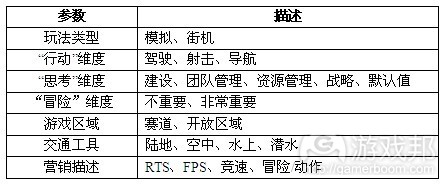
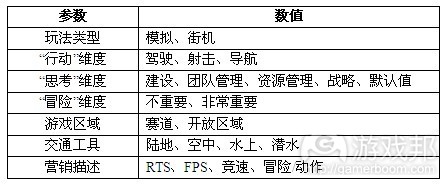


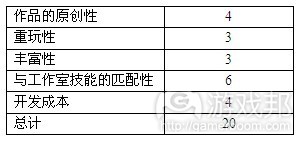
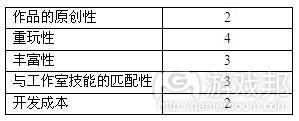

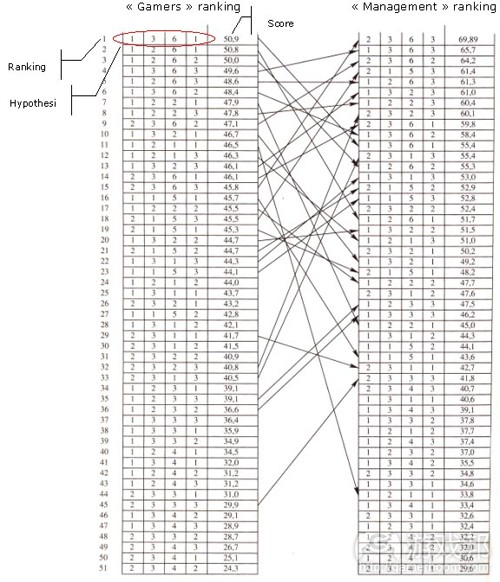

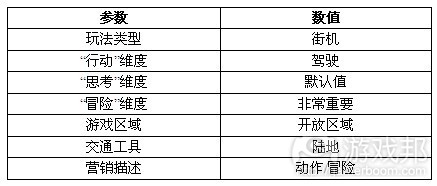
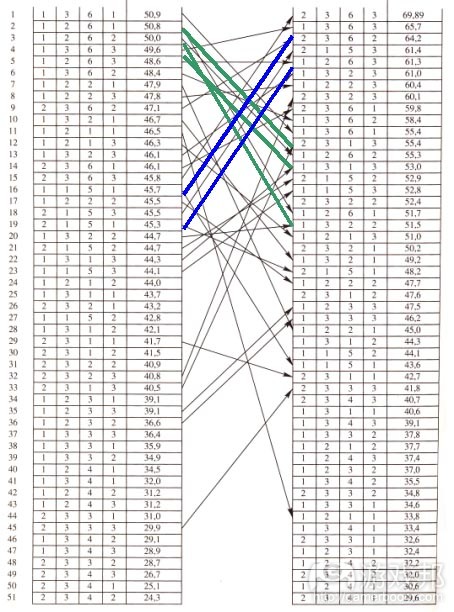
















 闽公网安备35020302001549号
闽公网安备35020302001549号